The difference between coffee aroma and taste are closely connected, and it can be quite difficult describing these when sipping away at your morning brew.
Aroma is defined as an odour, while taste is the sense experienced by the tongue.
Specific aroma and taste profiles are described by sensory experts, to differentiate different types of coffees and roasts.
This largely comes down to a number of different factors, such as where the coffee has come from and the processing methods that were used.
Table of Contents
What is Coffee Aroma?
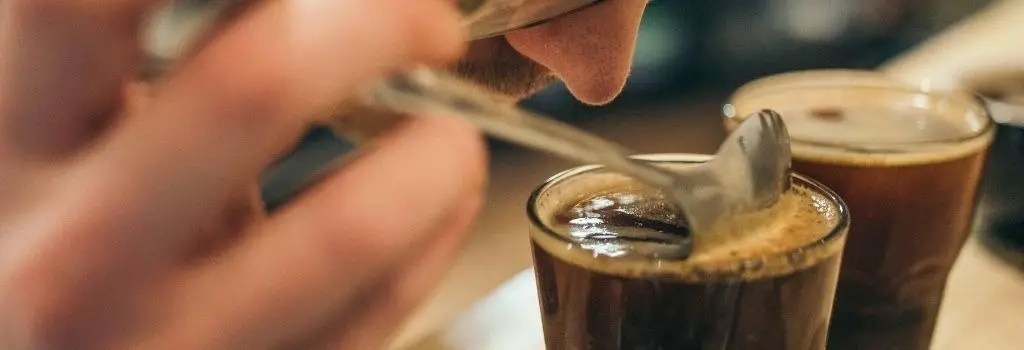
Aroma is defined as an odour.
Sensed through receptors in the nose, and also through the back of the mouth where the nasal and mouth cavities are interlinked.
It is flavourful compounds that are released from coffee through the air.
Fresh coffee will have a much stronger aroma than older, stale coffee, and will ultimately taste better.
There are over 800 known aromatics in coffee with new ones being discovered regularly thanks to advances in testing equipment.
Examples of coffee aromas include flowery, nutty, smoky, and herby.
By understanding how aroma is created and perceived, we can make more informed decisions on how to brew and recognise why various levels of extraction can taste and smell so different.
Where Does Coffee Aroma Come From?
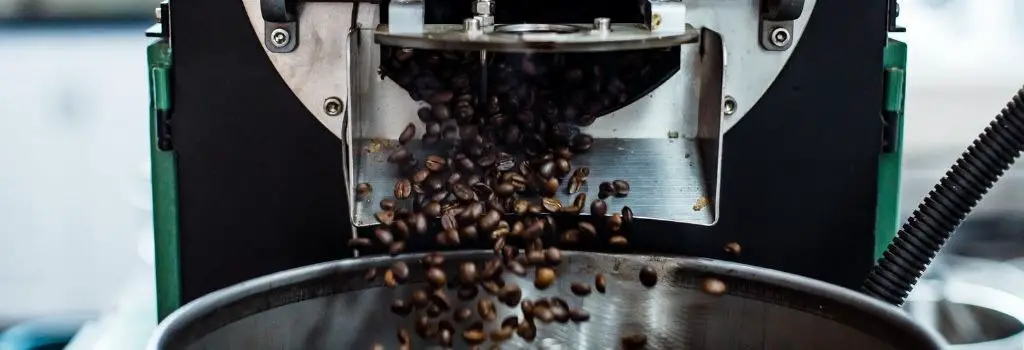
When coffee beans are raw, also known as their green form, they have very little aroma.
It is only during the roasting phase that the true aroma of coffee develops, due to creating the various volatile compounds.
The complexity of aromas relies on the composition of chemical compounds in the green beans.
These precursors of volatile compounds have different concentrations depending on many variables.
Including variety, weather conditions at origin, level of maturation, and processing choices.
What is Coffee Taste?
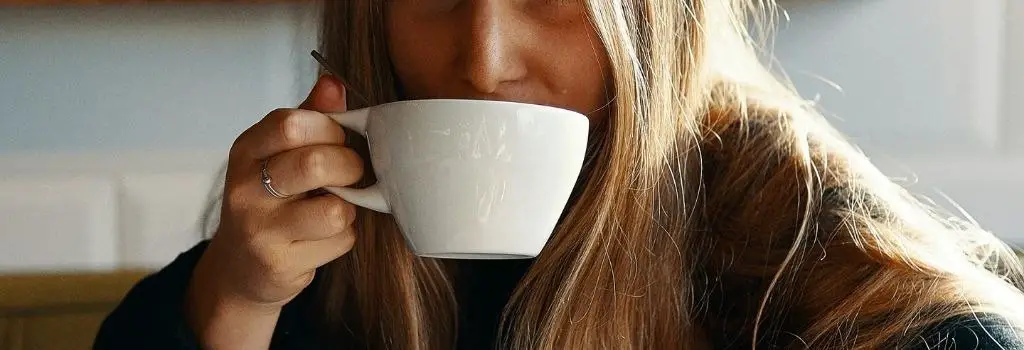
Taste is the sense experienced by the tongue.
Taste describes sensations such as saltiness, sweetness, sourness, bitterness, acidity and mellow to name a few.
Fruit tasting coffees are some of the highest sought after qualities.
They are generally grouped into stone fruit (peach, apricot, nectarine) to citrus (orange, lemon, grapefruit, nectarine) and berries (raspberry, strawberry, blackberry, black currant, cherry).
Generally, Africa puts out a lot of coffees with prominent fruity tastes, while South American coffees grown will sometimes have them as a secondary.

| AROMA | TASTE |
| Experienced by the nose | Experienced by the tongue |
| Flowery, nutty, smoky, herby | Saltiness, sweetness, sourness |
| Defined as an odour | Defined as a flavour |
What is the Coffee Wheel?
This is also known as the Coffee Taster’s Flavour Wheel.
It’s a collaborative effort by the Specialty Coffee Association of America and World Coffee Research.
So as a tool, it is meant to be intuitive, enjoyable, and a benefit to those who seek to analyse and describe coffees.
This may all sound pretty complicated for some people.
Therefore, we have included the below image which was designed to be a tool to help the coffee taster.
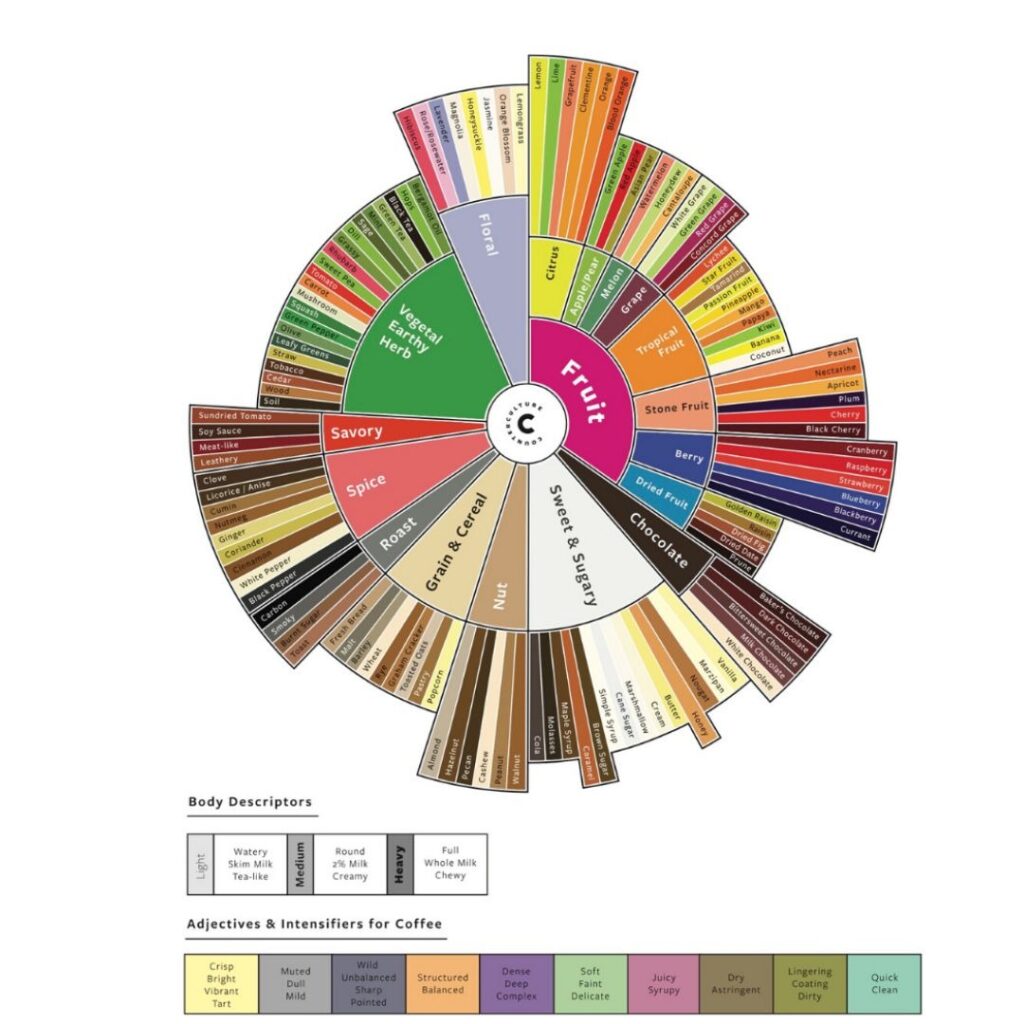
You can use the flavour wheel in 8 simple steps;
- Take it all in.
- Start tasting coffee.
- Start at the centre.
- Read the Lexicon.
- Check out some references.
- Start at the centre again.
- Use your words.
- Study the colours.
You can find out in more detail how to use the Coffee Tasters Flavour Wheel at the Speciality Coffee Association news website.
Find out 4 Countries With Different Coffee Flavours For Your Taste Buds To Savour.
What Should Good Coffee Taste Like?

Once you have an understanding of the differences between coffee aroma and coffee taste, you will start to develop the skills on determining what high quality coffee should taste like.
Good coffee should have a balance of acidity, sweetness, and bitterness in one sip, with a smooth flavour, and no off-notes.
You should be able to find those notes we mentioned earlier in the article, such as fruity, floral, or earthy flavours.
How to Improve your Coffee Palate?

A refined palate will help you to enjoy your brews even more, not to mention further your coffee career.
However, not all people are lucky enough to have a highly refined palate. It is true, some people will naturally have a better palate than others.
The good news is, for those that do not have a highly refined palate, there are ways to learn this skill, and ultimately improve your coffee palate.
Having a refined palate is very important if you are wanting to easily detect specific stone fruits in a cup of coffee.
It will also help you name, or find a defect by taste alone.
An important step to take is to ensure you are drinking a variety of coffees from all over the world.
“Trying different coffee origins, and different roasts from different roasters, can help you distinguish between the huge range of profiles and flavours out there”.
Lok Chan, World Cup Tasters Champion 2017
Also, be familiar to a wide range of flavours, so try adding fruits and candies to your diet.
Fruit is basically the most common type of note you will find in coffee.
However, depending on where you live, it can be difficult to access the wide range of fruits.
This is why you can also train your palate by tasting different candies too.
Ultimately you need to practise regularly. A refined palate requires constant training.
Why you should try a Coffee Cupping Session?
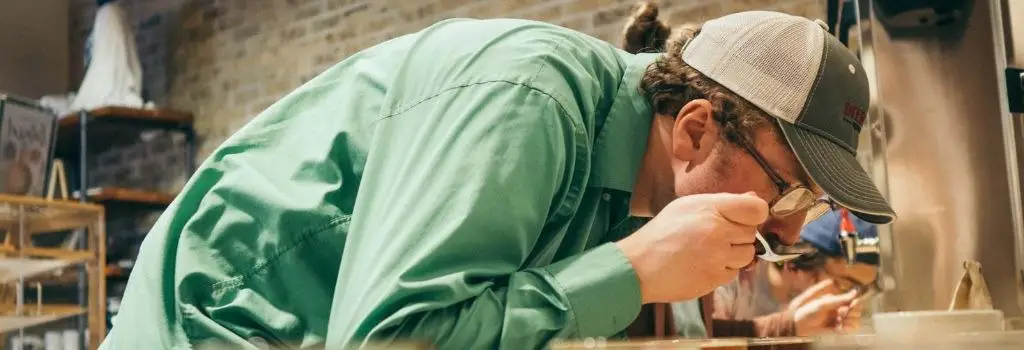
Coffee cupping is the practice of observing the different tastes and aromas of specialty coffee.
A good coffee cupping session deepens your understanding and appreciation of the subtleties and nuances of great coffee.
You can preform the session yourself, or you can reach out to more experienced coffee tasters.
These are usually cafe owners and/or employees whose experience is invaluable, but not a requirement.
FAQ’s

Q: Why does coffee smell good but taste bad?
A: When sniffing up the aroma of freshly brewed coffee, our smell receptors send out a different message to the brain than when exhaling while swallowing the coffee.
Q: Why does fresh coffee taste better?
A: Oxidation is what gives your coffee its unique (depending on the roast) flavours and aromas.
But oxidation will carry on whether you are brewing or not.
Q: Does smelling coffee give you caffeine?
A: Smells can trigger good feelings, memories, and even trauma.
Coffee drinkers smell the coffee and this signals the brain that caffeine is indeed on the way, which provides stimulation.
Q: What is the aroma of coffee?
A: Aroma is one of the primary coffee qualities denoting a coffee’s flavour along with body, acidity, sweetness, bitterness, and aftertaste.
Coffee’s aroma is one of the main categories used by professional coffee tasters to judge the quality of a coffee.
Conclusion: What Is The Difference Between Coffee Aroma and Coffee Taste?
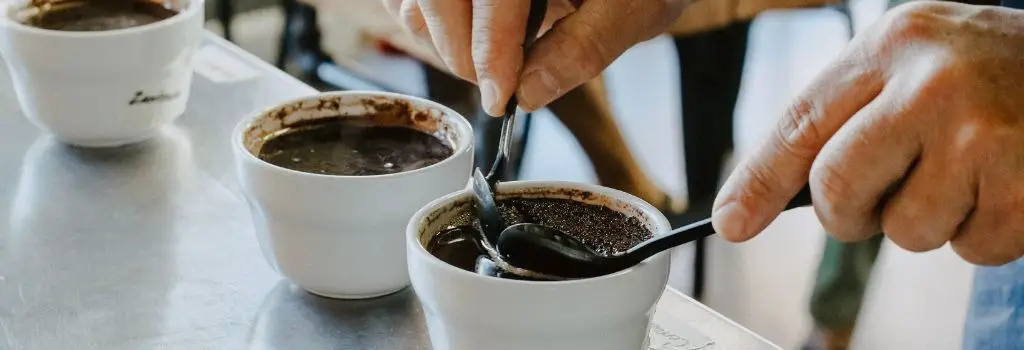
So, overall, coffee’s flavour is defined as a combination of both aroma and taste.
It is important to have an understanding on the differences between aroma and taste.
This will help you to enjoy your brews even more, not to mention further your coffee career.
By continuously training your palate and using tools such as the coffee flavour wheel, you will begin to find those subtle notes in coffee that you seek.

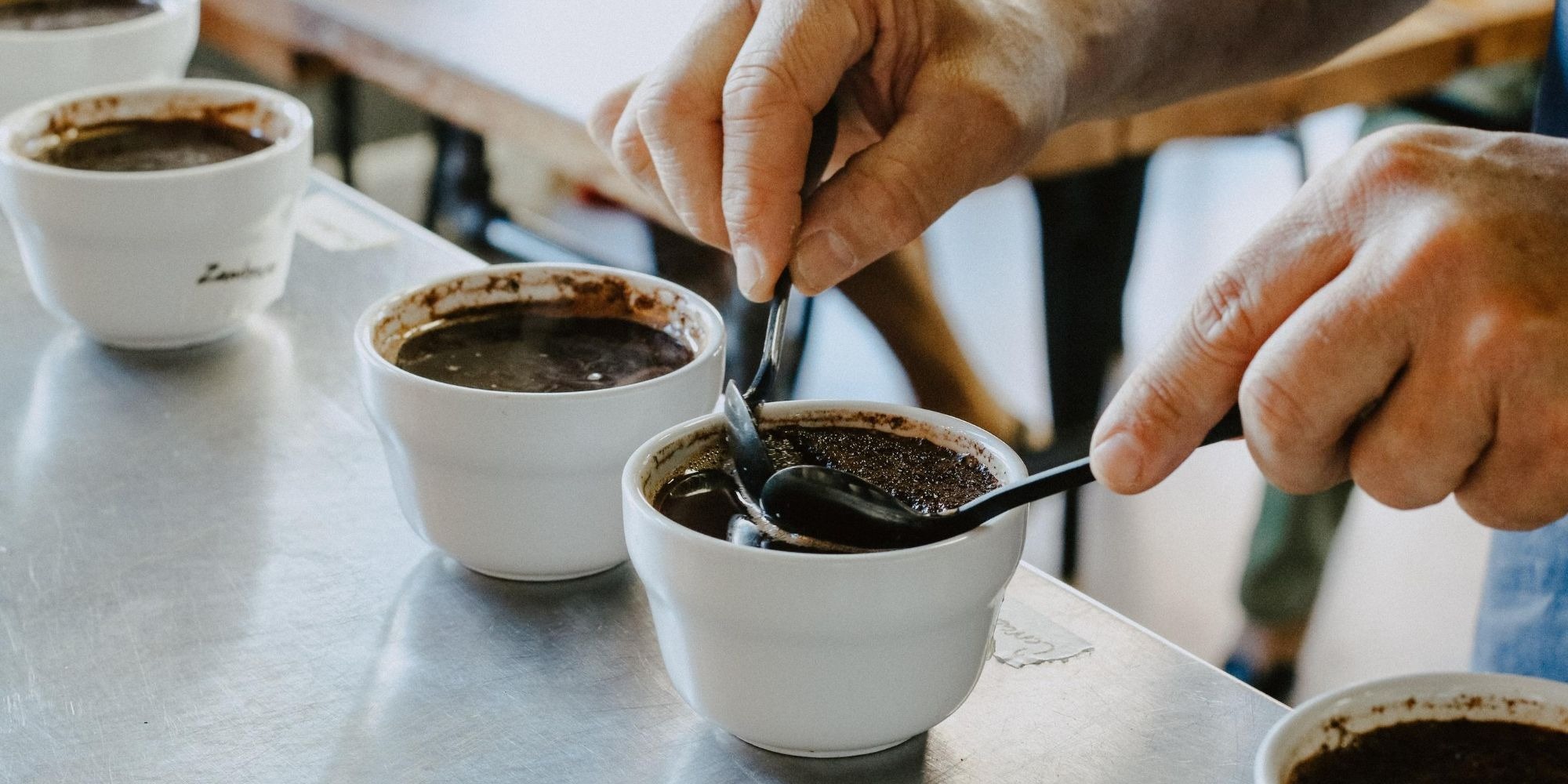
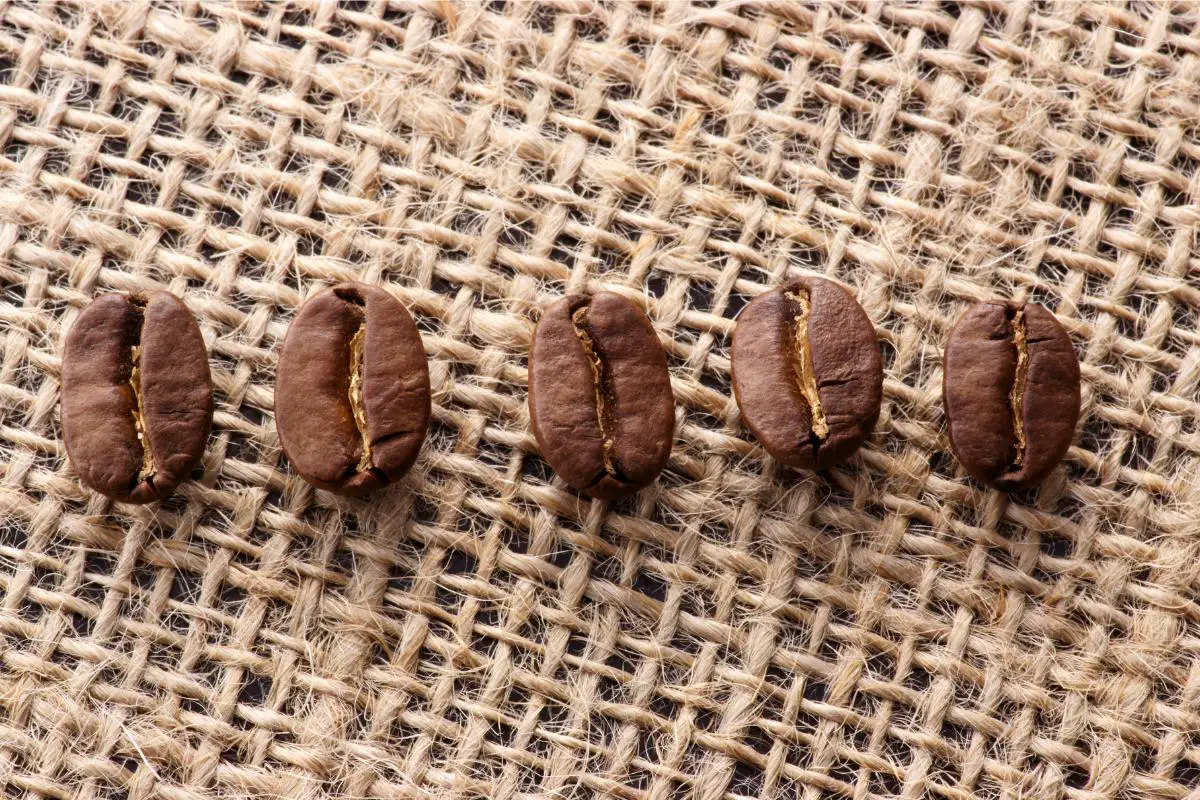
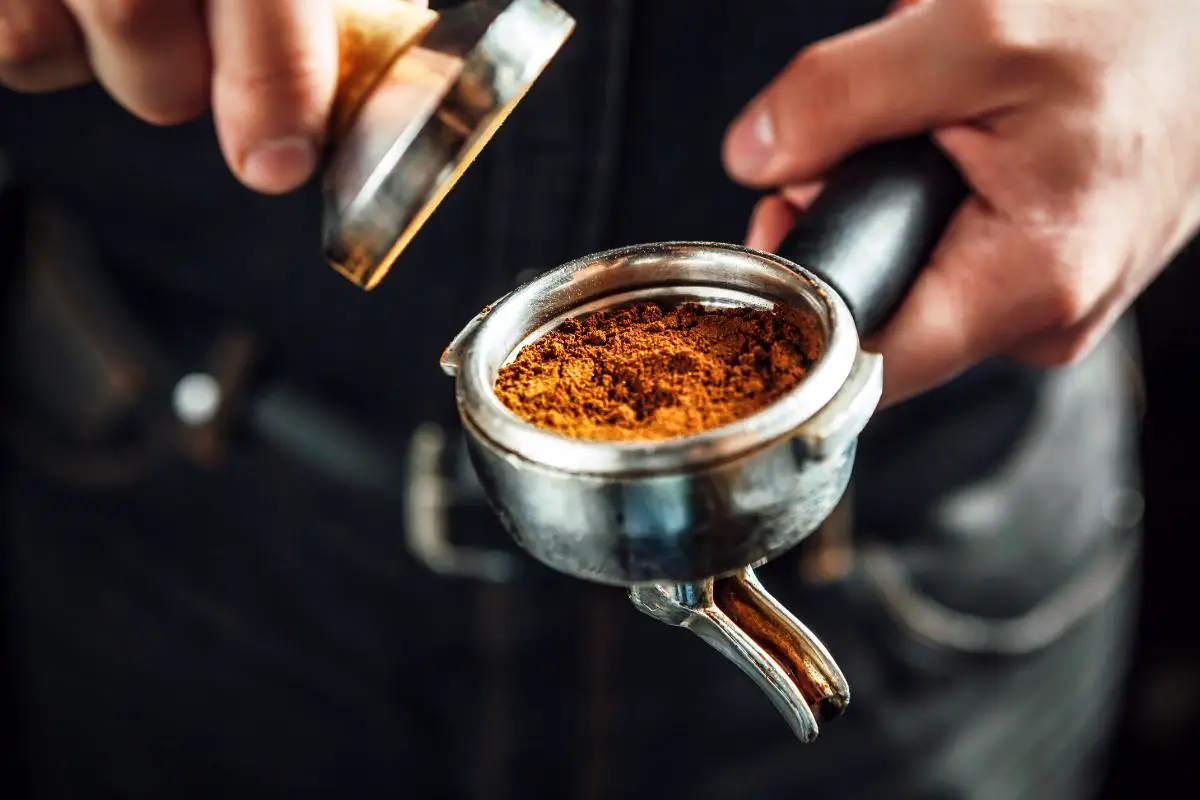
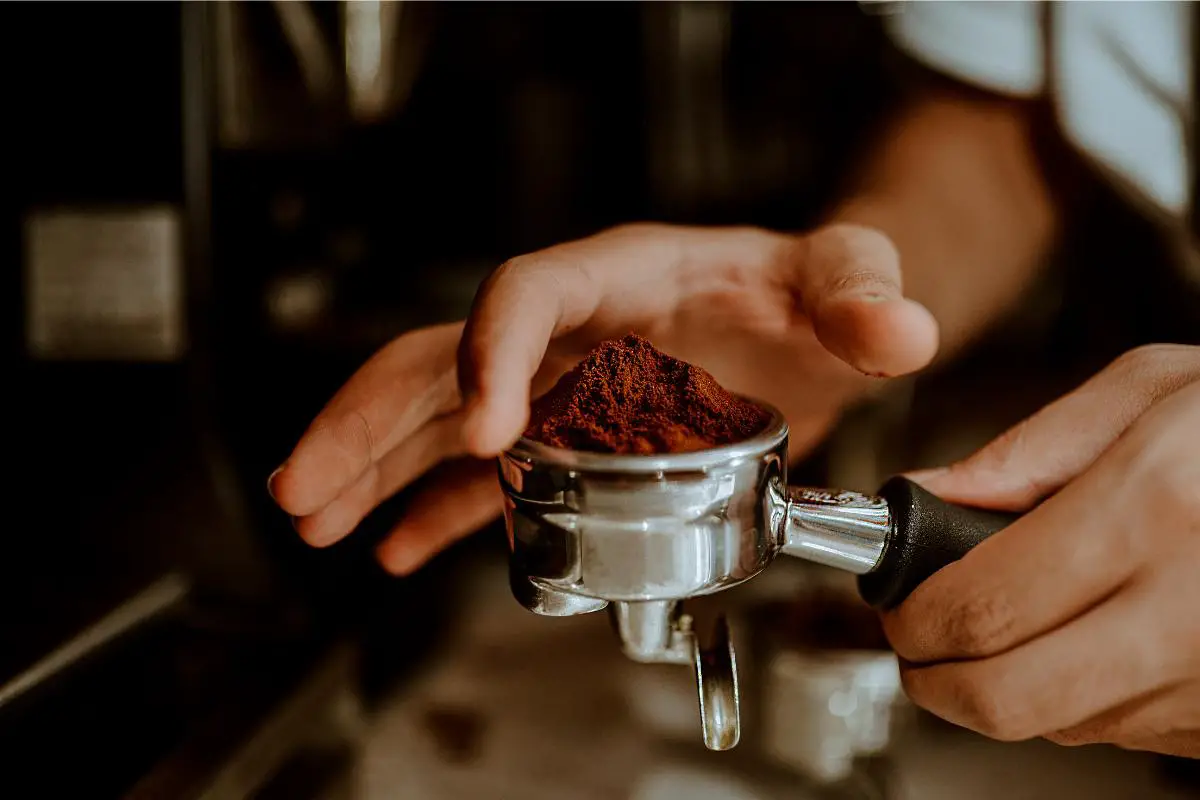
Leave a Reply